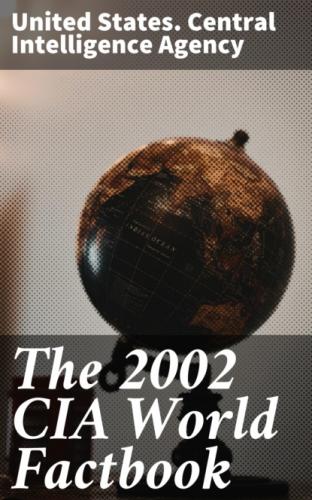Terrain: in the west and south mostly mountains (Alps); along the eastern and northern margins mostly flat or gently sloping
Elevation extremes: lowest point: Neusiedler See 115 m highest point:
Grossglockner 3,798 m
Natural resources: iron ore, oil, timber, magnesite, lead, coal, lignite, copper, hydropower
Land use: arable land: 17% permanent crops: 1% other: 82% (1998 est.)
Irrigated land: 457 sq km (2000 est.)
Natural hazards: landslides; avalanches; earthquakes
Environment - current issues: some forest degradation caused by air and soil pollution; soil pollution results from the use of agricultural chemicals; air pollution results from emissions by coal- and oil-fired power stations and industrial plants and from trucks transiting Austria between northern and southern Europe
Environment - international agreements: party to: Air Pollution, Air
Pollution-Nitrogen Oxides, Air Pollution-Sulphur 85, Air Pollution-Sulphur
94, Air Pollution-Volatile Organic Compounds, Antarctic Treaty,
Biodiversity, Climate Change, Desertification, Endangered Species,
Environmental Modification, Hazardous Wastes, Law of the Sea, Nuclear
Test Ban, Ozone Layer Protection, Ship Pollution, Tropical Timber 83,
Tropical Timber 94, Wetlands, Whaling signed, but not ratified: Air
Pollution-Persistent Organic Pollutants, Antarctic-Environmental Protocol,
Climate Change-Kyoto Protocol
Geography - note: landlocked; strategic location at the crossroads of central Europe with many easily traversable Alpine passes and valleys; major river is the Danube; population is concentrated on eastern lowlands because of steep slopes, poor soils, and low temperatures elsewhere
People Austria
Population: 8,169,929 (July 2002 est.)
Age structure: 0-14 years: 16.4% (male 686,205; female 652,840) 15-64 years: 68.2% (male 2,814,866; female 2,756,777) 65 years and over: 15.4% (male 484,313; female 774,928) (2002 est.)
Population growth rate: 0.23% (2002 est.)
Birth rate: 9.58 births/1,000 population (2002 est.)
Death rate: 9.73 deaths/1,000 population (2002 est.)
Net migration rate: 2.45 migrant(s)/1,000 population (2002 est.)
Sex ratio: at birth: 1.05 male(s)/female under 15 years: 1.05 male(s)/female 15-64 years: 1.02 male(s)/female 65 years and over: 0.62 male(s)/female total population: 0.95 male(s)/female (2002 est.)
Infant mortality rate: 4.39 deaths/1,000 live births (2002 est.)
Life expectancy at birth: 81.31 years (2002 est.) male: Total fertility rate: 1.4 children born/woman (2002 est.)
HIV/AIDS - adult prevalence rate: 0.1% (2001 est.)
HIV/AIDS - people living with HIV/AIDS: 843 (2001 est.)
HIV/AIDS - deaths: 8 (2001 est.)
Nationality: noun: Austrian(s) adjective: Austrian
Ethnic groups: German 88%, non-nationals 9.3% (includes Croatians, Slovenes, Hungarians, Czechs, Slovaks, Roma), naturalized 2% (includes those who have lived in Austria at least three generations)
Religions: Roman Catholic 78%, Protestant 5%, Muslim and other 17%
Languages: German
Literacy: definition: age 15 and over can read and write total population: 98% male: NA% female: NA%
Government Austria
Country name: Republic of Austria conventional short form: Oesterreich
Government type: federal republic
Capital: Vienna
Administrative divisions: 9 states (Bundeslaender, singular -
Bundesland); Burgenland, Kaernten, Niederoesterreich, Oberoesterreich,
Salzburg, Steiermark, Tirol, Vorarlberg, Wien
Independence: 1156 (from Bavaria)
National holiday: National Day, 26 October (1955); note - commemorates the State Treaty restoring national sovereignty and the end of occupation and the passage of the law on permanent neutrality
Constitution: 1920; revised 1929 (reinstated 1 May 1945)
Legal system: civil law system with Roman law origin; judicial review of legislative acts by the Constitutional Court; separate administrative and civil/penal supreme courts; accepts compulsory ICJ jurisdiction
Suffrage: 18 years of age; universal; compulsory for presidential elections
Executive branch: chief of state: President Thomas KLESTIL (since 8 July 1992) head of government: Chancellor Wolfgang SCHUESSEL (OeVP)(since 4 February 2000); Vice Chancellor Susanne RIESS-PASSER (FPOe) (since 4 February 2000) cabinet: Council of Ministers chosen by the president on the advice of the chancellor elections: president elected by direct popular vote for a six-year term; presidential election last held 19 April 1998 (next to be held in the spring of 2004); chancellor traditionally chosen by the president from the plurality party in the National Council; in the case of the current coalition, the chancellor was chosen from another party after the plurality party failed to form a government; vice chancellor chosen by the president on the advice of the chancellor note: government coalition - OeVP and FPOe election results: Thomas KLESTIL reelected president; percent of vote - Thomas KLESTIL 63%, Gertraud KNOLL 14%, Heide SCHMIDT 11%, Richard LUGNER 10%, Karl NOWAK 2%
Legislative branch: bicameral Federal Assembly or Bundesversammlung consists of Federal Council or Bundesrat (64 members; members represent each of the states on the basis of population, but with each state having at least three representatives; members serve a four- or six-year term) and the National Council or Nationalrat (183 seats; members elected by direct popular vote to serve four-year terms) election results: National Council - percent of vote by party - SPOe 33.2%, OeVP 26.9%, FPOe 26.9%, Greens 7.4%; seats by party - SPOe 65, OeVP 52, FPOe 52, Greens 14 elections: National Council - last held 3 October 1999 (next to be held in the fall of 2003)
Judicial branch: Supreme Judicial Court or Oberster Gerichtshof; Administrative Court or Verwaltungsgerichtshof; Constitutional Court or Verfassungsgerichtshof
Political parties and leaders: Austrian People's Party or OeVP [Wolfgang
SCHUESSEL]; Freedom Party of Austria or FPOe [Susanne RIESS-PASSER];
Social Democratic Party of Austria or SPOe [Alfred GUSENBAUER]; The
Greens Alternative or GA [Alexander VAN DER BELLEN]
Political pressure groups and leaders: Austrian Trade Union Federation (primarily Socialist) or OeGB; Federal Economic Chamber; OeVP-oriented League of Austrian Industrialists or VOeI; Roman Catholic Church, including its chief lay organization, Catholic Action; three composite leagues of the Austrian People's Party or OeVP representing business, labor, and farmers
International organization participation: AfDB, AsDB, Australia Group,
BIS, BSEC (observer), CCC, CE, CEI, CERN, EAPC, EBRD, ECE, EIB, EMU,
ESA, EU, FAO, G- 9, IADB, IAEA, IBRD, ICAO, ICC, ICFTU, ICRM, IDA, IEA,
IFAD, IFC, IFRCS, ILO, IMF, IMO, Interpol, IOC, IOM, ISO, ITU, MINURSO,
NAM (guest), NEA, NSG, OAS (observer), OECD, OPCW, OSCE, PCA, PFP, UN,
UNCTAD, UNDOF, UNESCO, UNFICYP, UNHCR, UNIDO, UNIKOM, UNITAR, UNMEE,
UNMIBH, UNMIK, UNMOGIP, UNMOT, UNOMIG, UNTSO, UPU, WCL, WEU (observer),
WFTU, WHO, WIPO, WMO, WToO,
